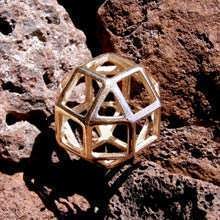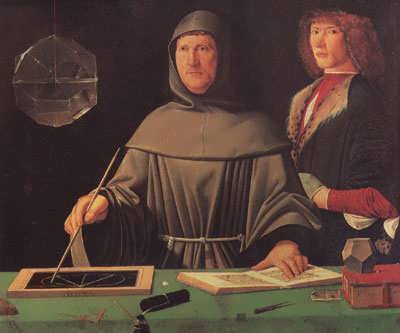
The Divine Reflection Gold Pendant
Hold the secret of creation and the nature of the universe. Unleash the divine powers within you.
Create endless harmony and bring us deep insight of the true nature of the cosmos and ourselves.
Divine Reflection Pendant
The Divine Reflection pendant was made as part of a fascinating journey into the depths of ancient philosophy, Renaissance art, the Kabbalah and the biblical mathematical and geometrical encrypted symbolism. At the base of this pendant lies a secret code hidden and encrypted throughout human history.
The Greek philosophers discovered the mathematical geometrical nature of creation. The Pythagoreans researched those discoveries into great depth but hid them from those opposing them. The same knowledge appeared later in the Jewish Kabbalah and again at the times of the Renaissance. The secrets of the Golden Mean, the five platonic solids and the 13 Archimedean solids, these shapes and mathematical geometrical laws were encrypted in the works of leading artists such as Leonardo De Vinci and Albrecht Durer.
When you focus and study these philosophies it becomes clear. The secret they were all trying to hide because they were living (as many of us still do) during a time of strict religious doctrines. Humans are created in the image/ pattern of creation itself. Furthermore, we humans have the ability to elevate to the level of creators.
For hundreds and thousands of years, we observed those perfect creations such as the Parthenon, The Great Pyramid, and the art of the great Renaissance artists. We observed and marveled after those who sought the cosmic principles of harmony and perfectness but most of us are not aware that those creations impress us so much because of the secrets of creation encrypted in them.
Divine reflection pendant Structure
The structure in the Divine reflection pendant is called Rhombicuboctahedron and it appears in the book De divina proportione by Luca Pacioli. The book was illustrated by Luca's friend – Leonardo De Vinci. The Rhombicuboctahedron structure is one of the 13 Archimedean solids.
The Divine proportion refers to the Golden mean, that same mysterious proportion that exists as one of nature's fundamental structures.
In a famous Portrait of Luca Pacioli from 1495, he appears pointing towards a board with a sketch of one of Euclid's geometric theorems. In the picture, Luca is observing a glass made Rhombicuboctahedron half filled with water. On the table next to it appears a dodecahedron. When I observed the picture deeply I understood that I found the symbol I was looking for.

Another fascinating object was the dodecahedron. Most of the encrypted symbols are based on the same numbers 72, 216, 144, 12, 3, and 5. These numbers are the keys to the creation of a dodecahedron. Furthermore, the Pentagon, which is the basic structure for creating the dodecahedron, appears in many drawings from the Renaissance era as a parallel to the human body. The reason for this is that we humans ( and all living things) are reflections of the universe itself.
An amazing fact about the dodecahedron is that thousands of years ago the Greek philosopher Plato claimed that the universe itself has the structure of a dodecahedron. Just recently, new scientific observations suggest that the universe actually does look like a dodecahedron!
The Divine reflection pendant symbolizes the way the universe and the Creator experience reality through us. It is also a key for us to connect to our own divinity through the insight of creation.